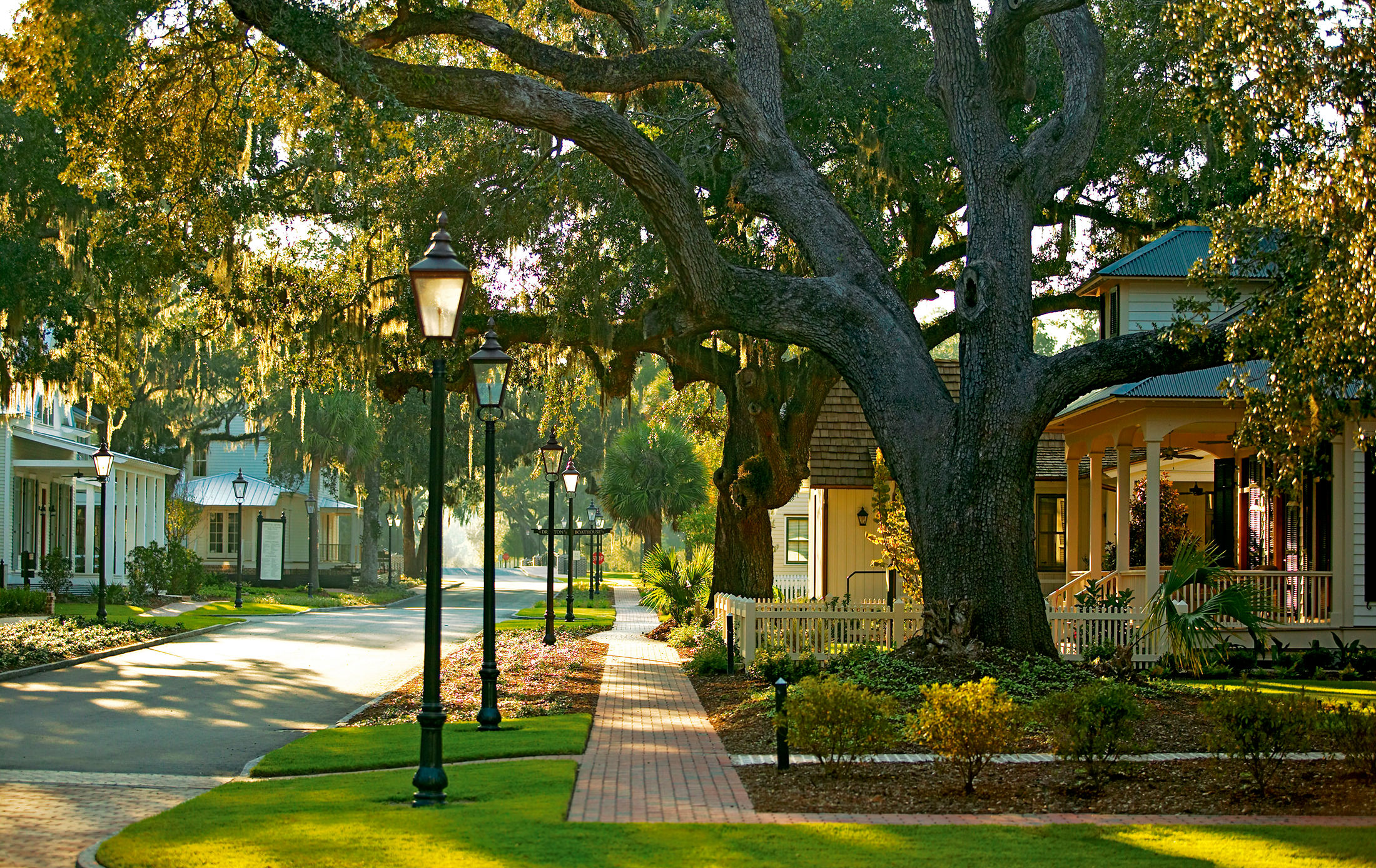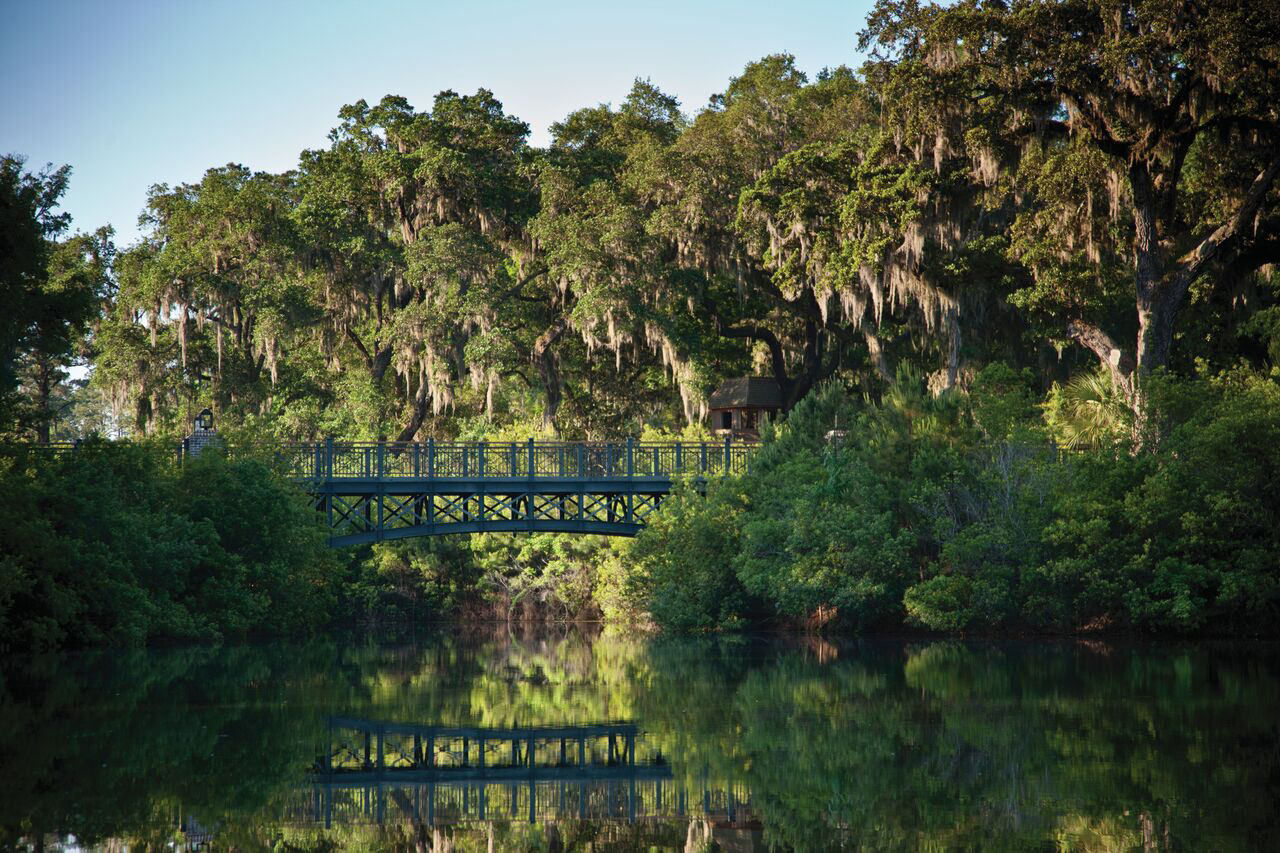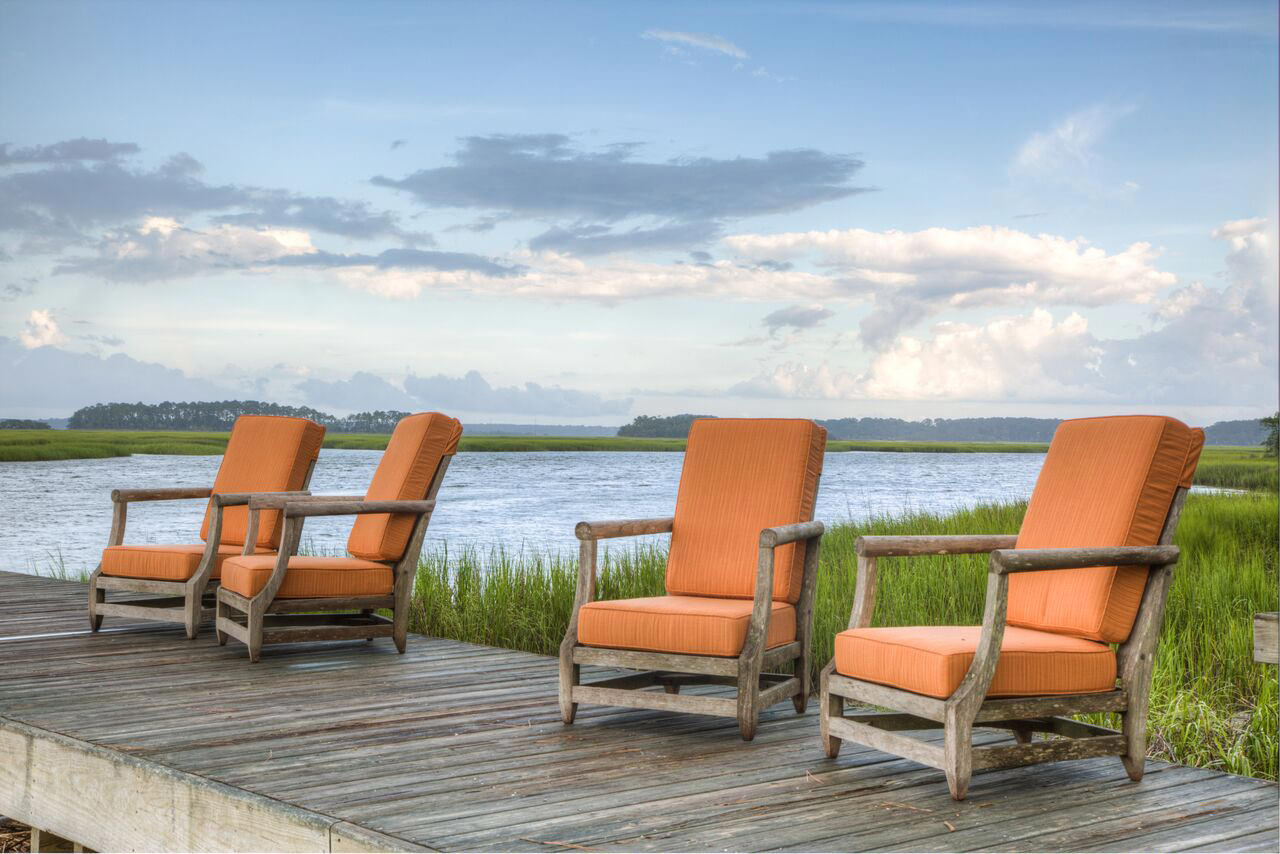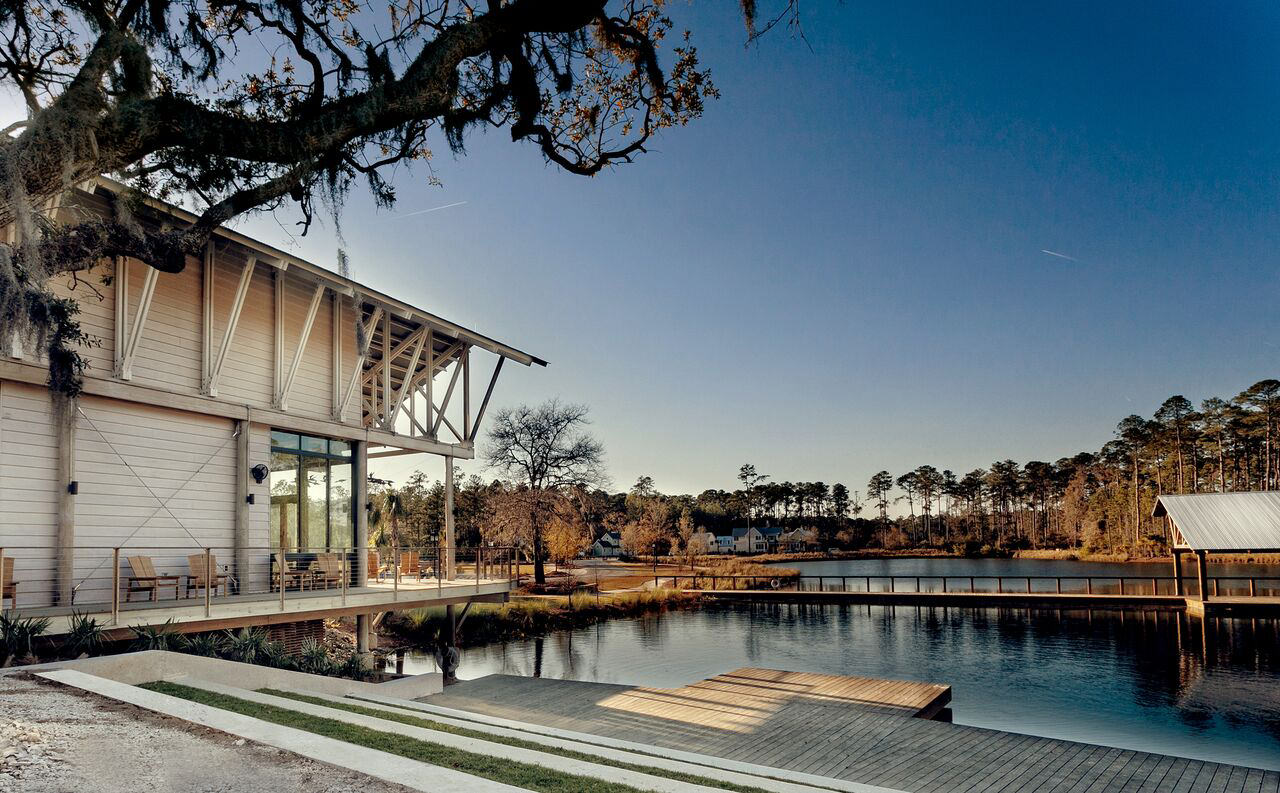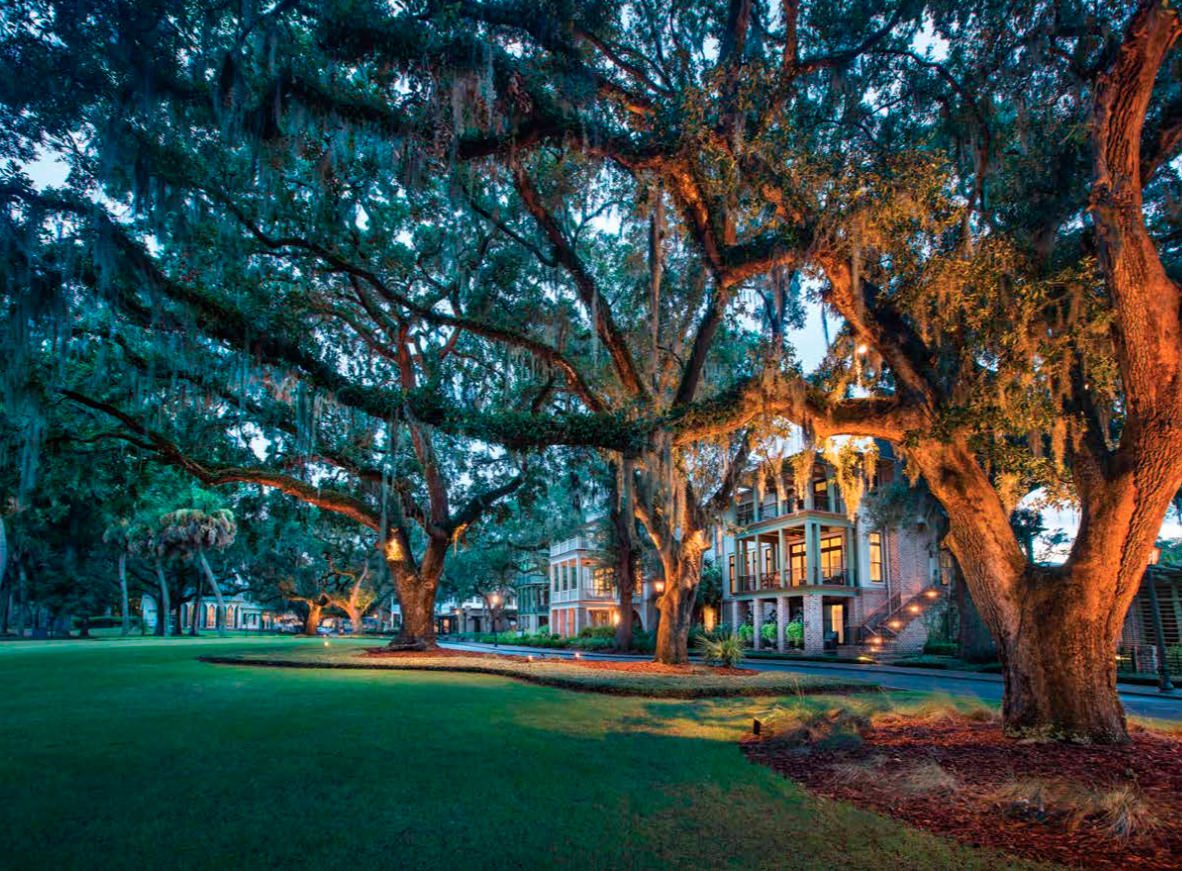There is something inherently magical about the live oak trees of America’s Deep South. As they sway in the soft moonlight, their enchanting fuzzy-looking branches graze the green grass underneath.
At Palmetto Bluff in South Carolina, these Spanish-moss-covered trees stand tall and bold as the porters of their land’s history.
A gated 20,000-acre resort, conservancy, and residential community, Palmetto Bluff is found along the Atlantic coastline and on the May River in Bluffton, which borders the state of Georgia. Much like all coastal towns and regions of the United States Eastern Seaboard, Bluffton’s history is rooted in the polarizing events of the American Revolution and the Civil War. Hundreds of acres here along the May River were once active plantations for cotton and indigo; but now, the area hails as a resort destination thanks to Palmetto Bluff, which is comprised of the 200-room AAA Five Diamond Montage-operated resort and spa, as well as homes for residents or vacationers looking to rent short-term.
According to Palmetto Bluff vice-president of marketing Courtney Hampson, this piece of property is one-and-a-half times the size of Manhattan. “It’s the largest remaining landmass of this size on the East Coast that’s not intersected by a major highway,” she says on a warm Saturday during the annual Music to Your Mouth festival. For the past 12 years, Palmetto Bluff has played host to the culinary event every November, bringing in chefs like ramen queen Sarah Gavigan from Nashville’s Otaku Ramen and Brandon Carter of vegetable-forward Farm here in Bluffton. Tastings, cookouts, wine socials, and live music—there are epicurean delights found across the property over the course of four days.
But for all it is in present day, Palmetto Bluff’s history cannot be forgotten. Among the resort’s Village Green, which overlooks the May River and sits adjacent to the River House Lounge, stand some brick remains of an early 1900s home. At the time, this property was a private retreat, and the grand, stately house was built by then-owner and New York finance man Richard T. Wilson Jr., who entertained prevalent American pedigree like the Vanderbilt, Astor, and Whitney families; they wined, dined, lawn bowled, hunted, and partied on what was even then considered a destination property for the affluent. Wilson’s four-storey manor burned down in 1926, though, leading him to sell the land to what would become the pulp and paper company Union Camp.
Fast-forward to 2000, and Crescent Communities purchased the land and turned it into the resort area it is today. “We know that the Wilsons 100 years ago were entertaining on this property,” Hampson says. “We’re carrying those traditions forward and that idea of people travelling from elsewhere to this spectacular place and making them feel special when they’re here.”
The property even has its own archaeologist, Dr. Mary Socci, who educates guests during walking tours of the shoreline. While visiting cemeteries that host Civil War participants, Socci explains that many slaves fled to neighbouring Hilton Head (now also a resort community) to seek refuge and potentially join the Union forces in exchange for promised emancipation. Nearby Charleston was then the largest slave port in the world, channeling 40 per cent of the West Africans sold to slavery in the wider U.S. From the early 16th century to 1865, there were an estimated 10.7 million humans traded; today, 60 per cent of African Americans can trace their ancestors’ first steps in America to South Carolina’s shores.
Back at a Palmetto Bluff rental home, an expansive bathroom lined with white and blue tiles beckons a soak in its big, inviting tub. Some quiet time ends up being the perfect opportunity to reflect on this place’s history, and how through both good and bad, it has helped shape the Deep South—and America as a whole.
Read more from Travel.

